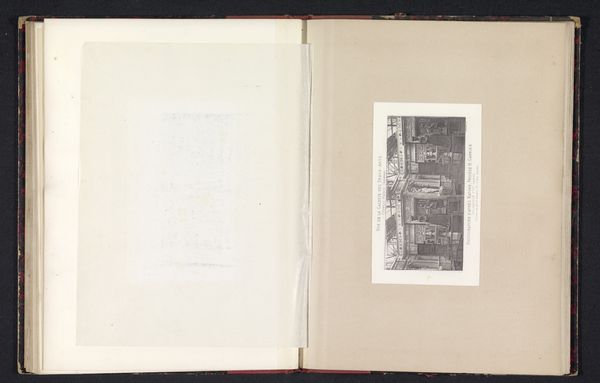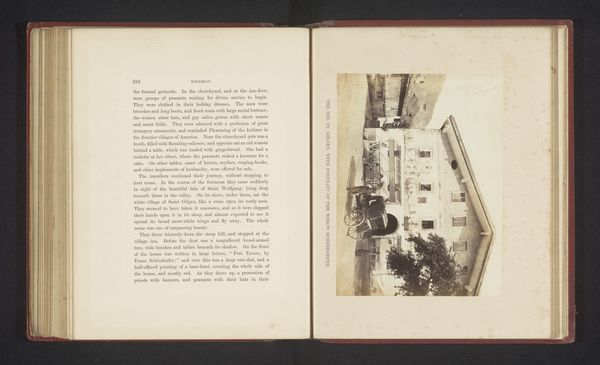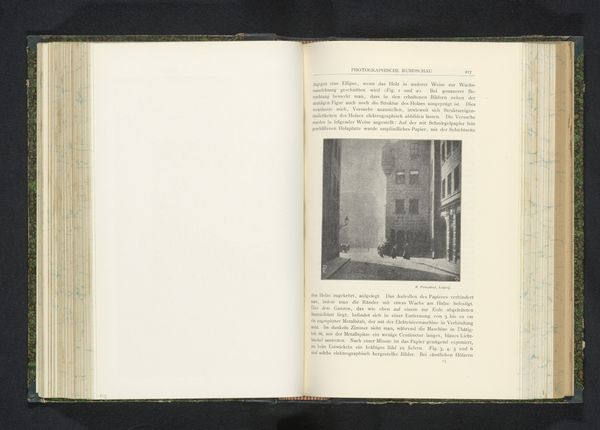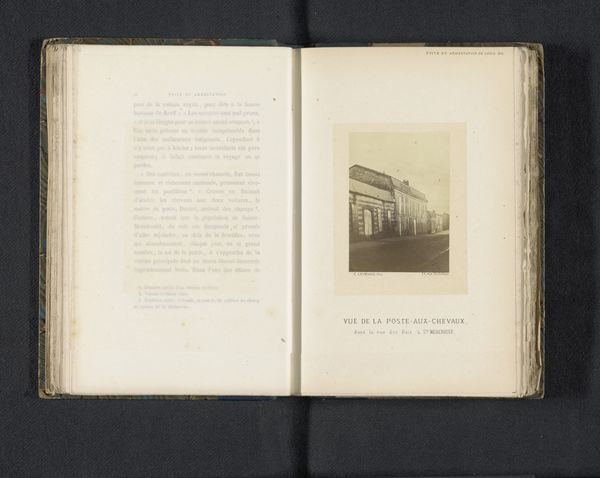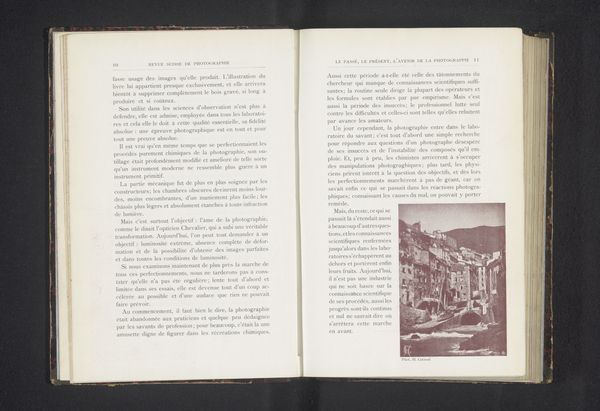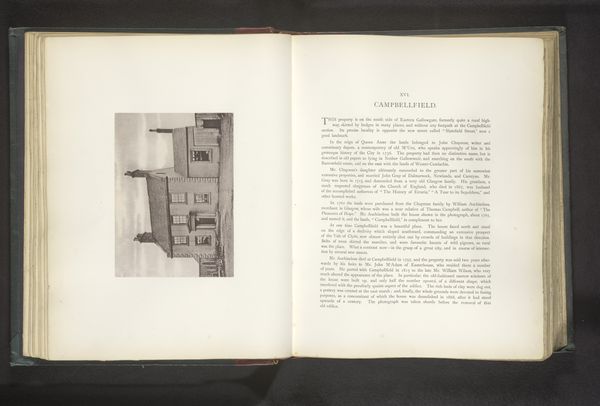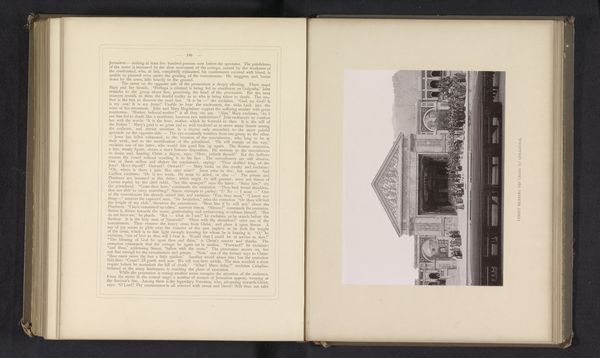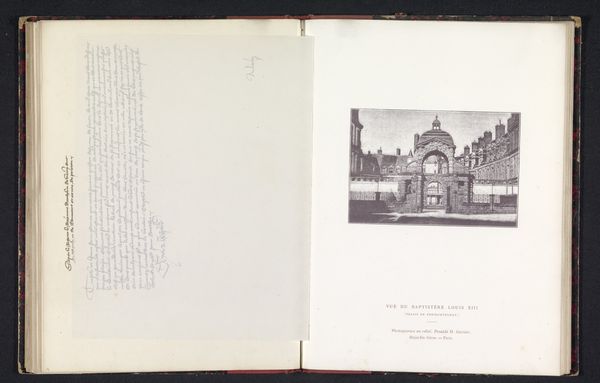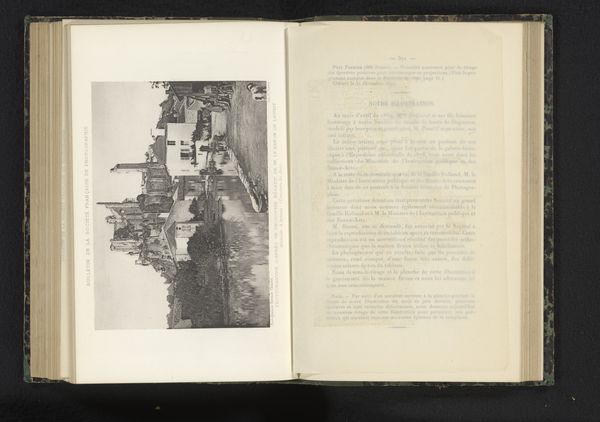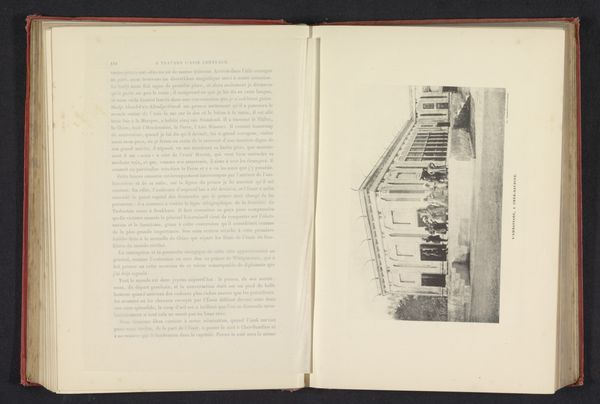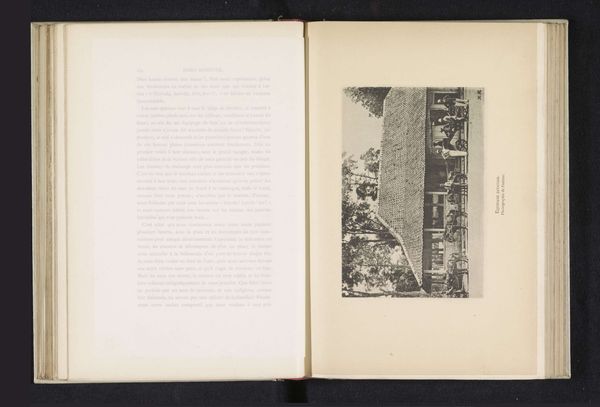
drawing, print, photography
#
drawing
# print
#
asian-art
#
photography
#
building
Dimensions: height 122 mm, width 169 mm
Copyright: Rijks Museum: Open Domain
Curator: Let’s turn our attention to this intriguing piece: "Deel van de gevel van een huis te Kanton," or "Part of the Facade of a House in Canton," dating back to before 1883, attributed to Hugues Krafft. It’s presented as a photographic print within a book, an artifact within an artifact. Editor: Wow. There’s something so detailed, almost mathematically captivating in the geometric patterns of the windows. I'm instantly drawn to the intricate designs, and my mind starts wondering about what life is like on the other side. Is it a home, a workshop, a place of stories waiting to be told? Curator: Indeed. This image offers us a glimpse into the visual culture of Canton during a period of intense Western engagement with China. The facade itself becomes a text, reflecting social hierarchies, aesthetic values, and perhaps even subtle resistance to external influences. Editor: The shadows cast by the roof overhang! It makes me think about the slow march of time. About rituals and gatherings that happened there, generations who admired the light shifting through the day…it is a time capsule of sorts. Curator: Precisely! Consider how architecture often functions as a form of silent communication. The choice of patterns, the arrangement of spaces, the materials used—these elements speak volumes about the identities and power dynamics at play. It makes you wonder, what sort of individual had these choices made for their living space? Editor: Yes, and perhaps we see not only the choices but also limitations? Who got to decide which designs were used, who was commissioned for the work, and what materials were accessible? Every aesthetic decision has underlying stories that tell truths about the period that might not be readily visible on the surface, you know? Curator: Exactly! The act of documenting it also contributes to a Western gaze, cataloging the East for European consumption. But Krafft's work is valuable as primary source material about vernacular designs now altered or disappeared by modernization. Editor: Which only makes us think about the stories contained within! How do we tease those from the wood, from the photographic paper? What’s truly missing? So much to learn; each detail begs us to ask more. Curator: This piece, more than a simple image, encourages dialogue about orientalism, preservation, and the very nature of seeing. Editor: Absolutely. It reminds me of the beauty that resides in the old, the imperfect, the things time slowly washes over.
Comments
No comments
Be the first to comment and join the conversation on the ultimate creative platform.


